constituent assembly of india debates (proceedings)- volume vii
constituent assembly of india debates (proceedings)- volume vii
constituent assembly of india debates (proceedings)- volume vii
You also want an ePaper? Increase the reach of your titles
YUMPU automatically turns print PDFs into web optimized ePapers that Google loves.
general in others. The States have comparatively little revenue or authority and seem to depend for a<br />
good deal <strong>of</strong> support on the Political Officer in their relations with their peoples. There is a strong desire<br />
among the people <strong>of</strong> the States to "federate" with their brothers in the British portion, a feeling which<br />
the people on the British side reciprocate. Some <strong>of</strong> the Siems also appear to favour amalgamation but<br />
their idea <strong>of</strong> the Federation differs from that <strong>of</strong> the people in that the Chiefs seek a greater power for<br />
themselves than the people are prepared to concede to them.<br />
Of the people in the Partially Excluded Areas, the Khasi are the most advanced and the Mikir the<br />
least. Unlike the Naga and the Lushai Hills these areas have had much more contact with people in the<br />
plains, situated as they are between the valleys <strong>of</strong> the Brahmaputra and the Surma. They have<br />
representatives in the provincial legislature who, in the case <strong>of</strong> the Garo and the Mikir Hills, are elected<br />
by franchise <strong>of</strong> the Nokmas and the village headmen respectively.<br />
3. DEVELOPMENT-<br />
As regards the degree <strong>of</strong> development and education in the excluded and Partially Excluded Areas,<br />
the most backward areas, comparatively appear to be the Mikir and the Garo Hills, both <strong>of</strong> which are<br />
Partially Excluded Areas. The Frontier Tracts, parts <strong>of</strong> which must be inhabited by people with on contact<br />
with civilisation or education, are <strong>of</strong> course on a different footing. The Khasi Hills have probably<br />
benefited by the fact that the capital <strong>of</strong> the province is situated in them. In the Garo Hills, Christian<br />
Missions have spread some education along with Christianity but the Mikir Hills have suffered from the<br />
fact that they are divided between two districts, Nowgong and Sibs agar, and thus nobody's child. Partial<br />
exclusion has in a way been responsible for their backwardness also, since both the Governor <strong>of</strong> the<br />
province and the Ministry can disclaim the sole responsibility for the area. The Sub-divisional Officers and<br />
Deputy Commissioners <strong>of</strong> these Hills moreover seem to have taken little interest in them and hardly any<br />
touring has been performed by <strong>of</strong>ficers in the Mikir areas. On the whole, however, the Hill Districts show<br />
considerable progress. The Khasi Hills have provided Ministers in the Provincial Government. The people<br />
<strong>of</strong> the Lushai Hills who have benefited by the activities <strong>of</strong> the Missionaries among them cannot be said to<br />
be behind the people <strong>of</strong> the plains in culture, education and literacy. In literacy particularly they are in a<br />
better position than a good number <strong>of</strong> the plains areas and the general percentage <strong>of</strong> literacy among<br />
them is about 13 per cent, while the literacy among men only is about 30 per cent. Among the Naga also<br />
may be found a number <strong>of</strong> persons <strong>of</strong> college education, though the district as a whole appears to be less<br />
advanced than the Lushai Hills. In the Naga Hills, the demand for education is keener in the Mokokchung<br />
Sub-division than in the Kohima Sub-division. In the North Cachar Hills, the development <strong>of</strong> the people<br />
has not been impressive and the Sub-division as a whole should be classed as more backward than other<br />
areas and comparable with the Mikir rather than the Lushai Hills. While education has made some<br />
progress in all these areas, the conditions <strong>of</strong> life and pursuit <strong>of</strong> non-agricultural occupations cannot be<br />
said to have reached the level attained in the plains, although the degree <strong>of</strong> intelligence necessary is<br />
undoubtedly available in most <strong>of</strong> these areas, even in the tribal areas. We were in fact impressed by the<br />
intelligence <strong>of</strong> the Abort and Mishmi, the Sherdukpen, the Hkampti and even the Konyak <strong>of</strong> the tribal<br />
area. The skill <strong>of</strong> many <strong>of</strong> the tribes in weaving and tapestry contains the elements <strong>of</strong> a very attractive<br />
cottage industry-at present articles are made largely for personal use-but agriculture is practically the<br />
only occupation, and with the exception <strong>of</strong> considerable areas occupied by the Angami in the Naga Hill<br />
under terraced and irrigated cultivation and the advanced cultivation in the Khasi Hills, the mode <strong>of</strong><br />
agriculture is still the primitive one <strong>of</strong> jhuming. Portions <strong>of</strong> the forest are burnt down and in the ashes <strong>of</strong><br />
the burnt patch the seeds are sown: the following year a new patch <strong>of</strong> forest is felled and cultivated and<br />
so on, the first patch perhaps being ready again for cultivation after three or four years. The jhuming<br />
patches develop a thick growth <strong>of</strong> bamboo or weeds and trees do not grow on them. Thus the method is<br />
destructive <strong>of</strong> good jungle. In certain parts, <strong>of</strong> course, conditions may be said to be unfavorable to the<br />
terracing <strong>of</strong> the hillsides and there is no source <strong>of</strong> water supply other than rainfall. In the Lushai Hills for<br />
instance comparatively few areas have the gradual slope which renders terracing easy; in the North<br />
Cachar Hills Sub-division, irrigation is difficult to arrange and the small hamlets occupied by the tribes


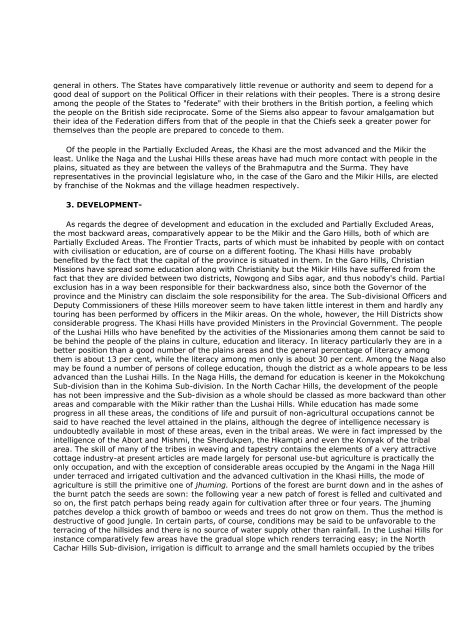
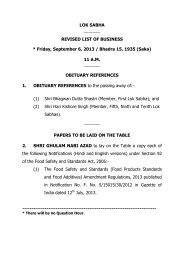
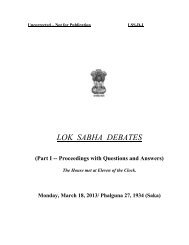

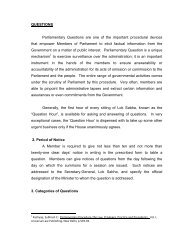
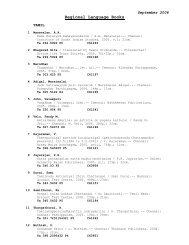

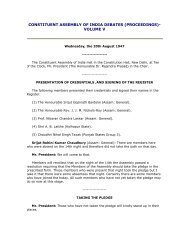
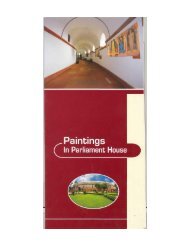
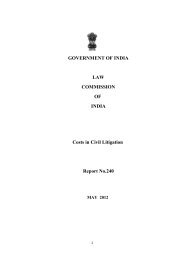
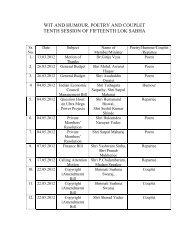
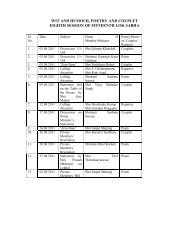

![gÉÉŌ A.]ÉŌ. xÉÉxÉÉ](https://img.yumpu.com/8015720/1/190x245/geeo-aeo-xeexee.jpg?quality=85)
